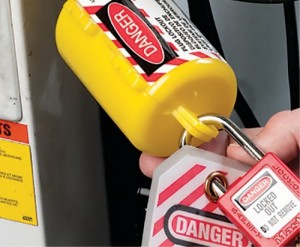Hydraulic safety knowledge and respect for the hazards of hydraulics is gained through training and mentoring; however, the practice of learn as you go is an unacceptable way to gain safety knowledge. Even though electrical components meet standards, when they are assembled into a circuit, the circuit must be inspected to meet codes of the local jurisdiction. For hydraulic circuits, there are no inspections required nor are there any bodies which carry jurisdiction or authority to do so.

A number of questions need to be addressed regarding hydraulic safety in hydraulic systems. An example is how many systems have installed isolation devices that make the task safe, simple, and
straightforward? More than 99% of systems today disregard the need for such equipment.
Before approaching any system, it is imperative that the mechanic examine the schematic first before attempting any component exchanges. The schematic will inform the mechanic of areas with potential stored energy. If the system has an accumulator installed, the procedure to remove this stored energy must be followed first before removing any lines.
When systems are designed, do they have fail-safe devices to prevent crushing or common injuries when fluid that is under pressure is not controlled? For elements such as mechanical securing platforms or scissoring devices, once in place the mechanic can then actuate the valves manually to expel stored energy residual. A pre-installed gauge would verify any existing pressure in the system before removing hoses or components. Yet such devices are not required when designing or building of systems is complete. The mechanic must be trained on how to approach such machines and how to identify the safety requirements needed before proceeding.
Another such source of injury is the expelling of fluid through pinhole leaks; such injection of fluid into the skin can cause irreparable harm or even death. How does one check for fluid leaks such as these? Never use your hand to check for a leak in a hydraulic hose. An obvious way to check for leaks is to completely power down the machine and conduct a proper lockout and tagout and check for visible leaks on the machine, hose or the floor.
If that doesn’t work, power down the machine and relieve system pressure by cycling control levers several times. Use protective glasses and other protective gear. The best practice is to use a 20 x 20 in. piece of hard board or cardboard, holding in your hand in front of you. Using a swiping movement from outside your body to the inside of your body allows the board to travel over the suspected area, watching for signs of oil. Travel slowly and be cautious of moving parts as you continue. Or, you can use fluid dyes, which glow under special ultraviolet lamps, to discover sources of leaks in your system.
These are but a sample of what needs to be done to inform and educate the new breed of mechanics arriving in the work force. Take the time to train and inform them of all hydraulic safety issues regarding stored energy before the next injury ends up being yours.
Contributed by J. Eric Freimuth, Hydraulic Training Associates, htahydraulics.com

